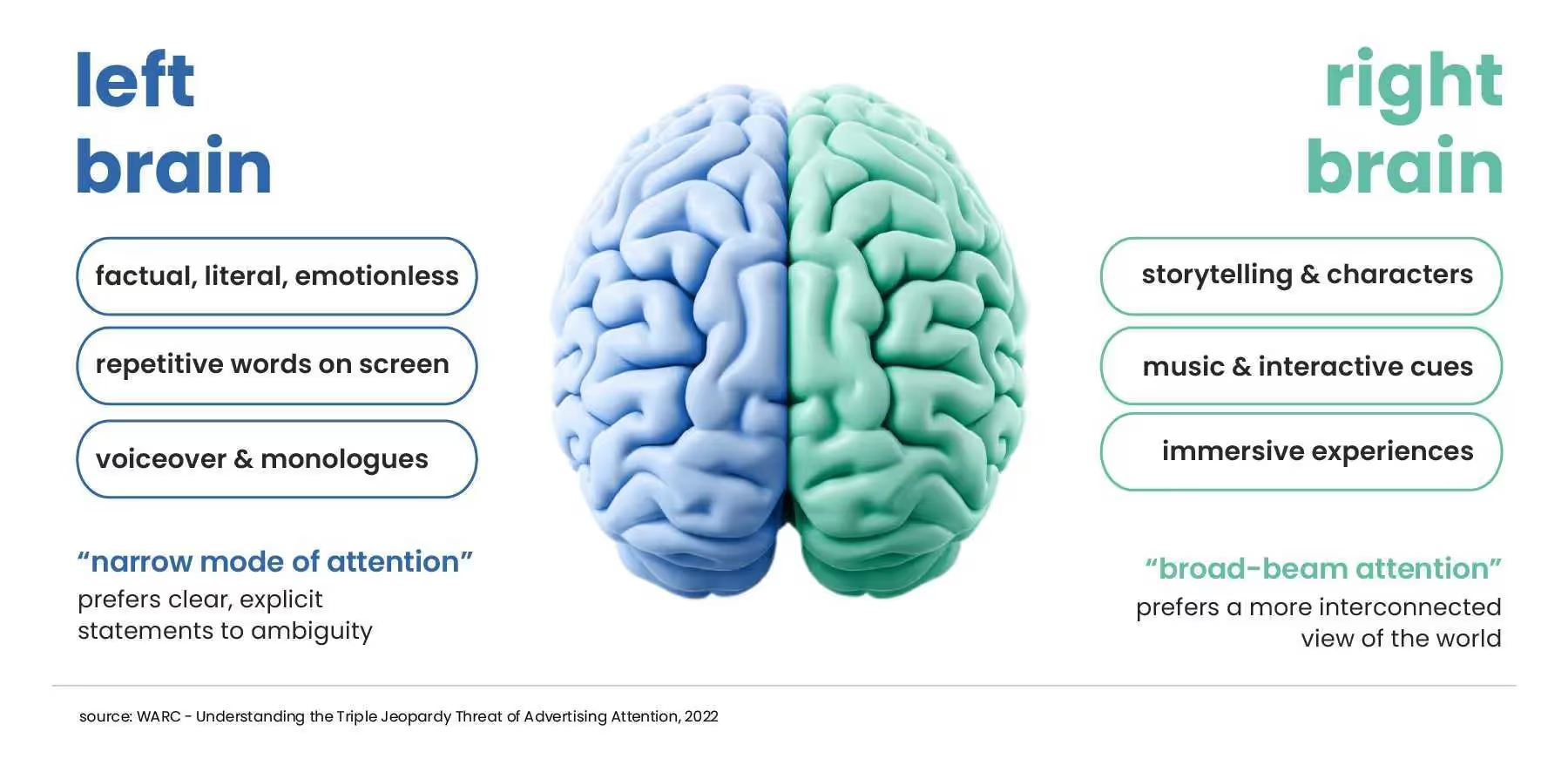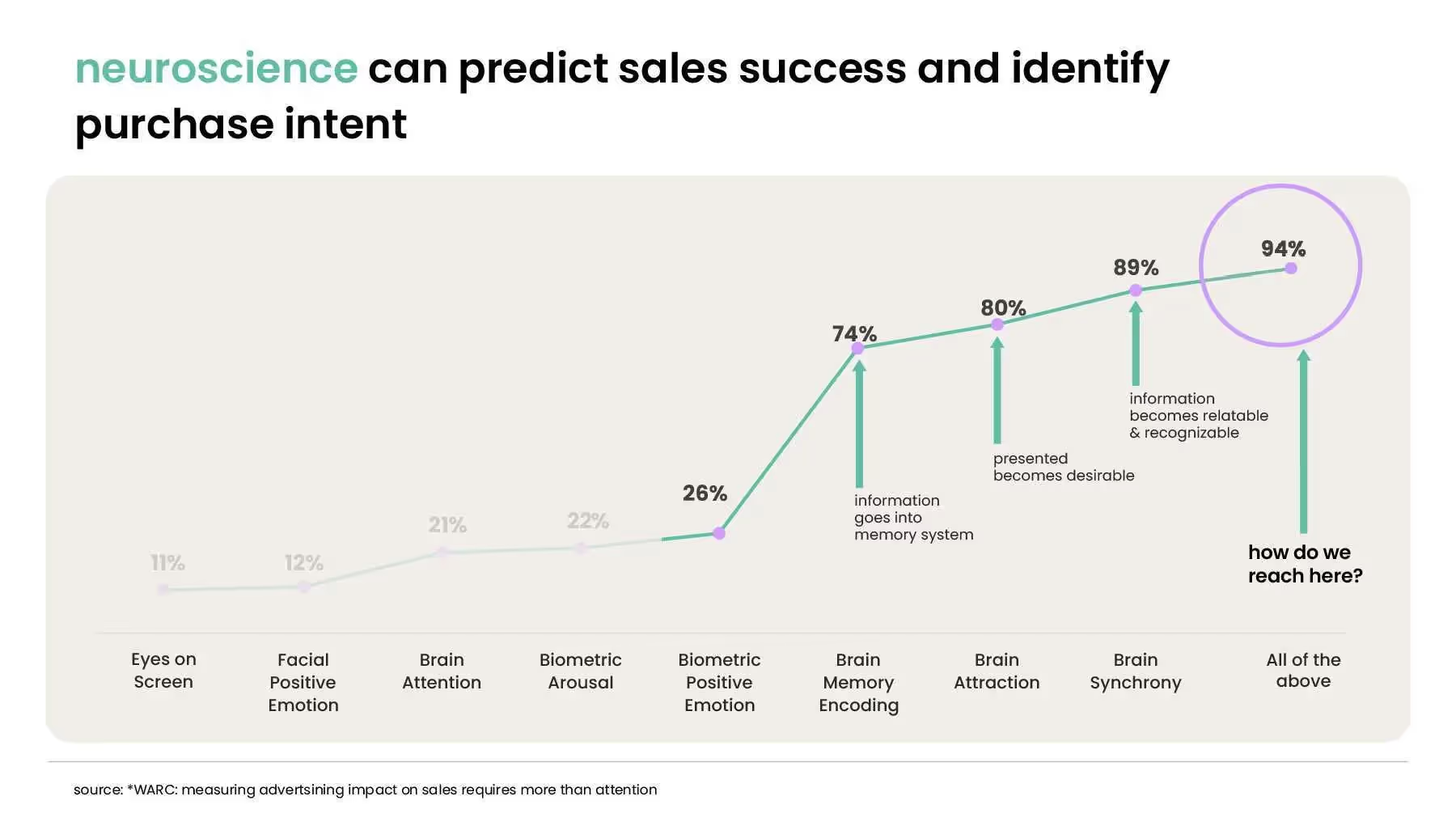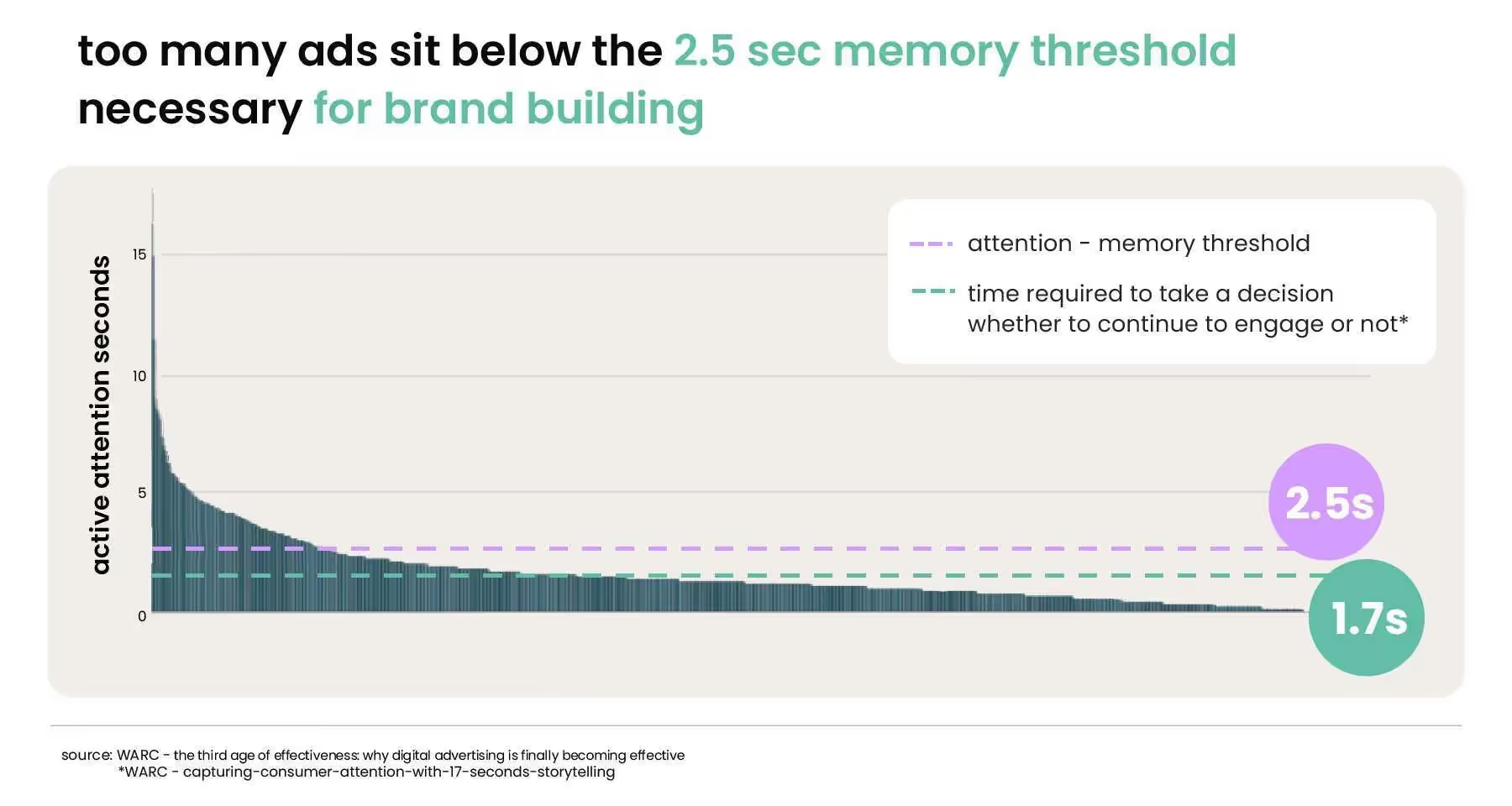The Science of Attention: What Actually Transforms Fleeting Moments Into Brand Impact?

Ever wondered why some ads stick in your memory while others vanish after you scroll? It’s not just oversaturated content or shorter attention spans — it comes down to understanding the science of attention. The human brain is wired to filter, focus, and forget at lightning speeds. Today, the decision to engage with an ad happens in only 1.7 seconds. That’s less time than it takes to blink thrice. (Did you just try it?)
Neuroscience reveals that attention is less about the sheer volume of content and more about how our brains engage with it. Even in today’s attention economy, the smallest triggers — emotional connection, creative storytelling, or relatability — can elevate an ad’s impact. The real question isn’t whether attention spans are shrinking (that's a give-in) but how brands can harness the science of attention to captivate attention, trigger conversions, and unlock advertising success.
left brain vs. right brain - decoding responsiveness to advertising
The human brain is divided into the left and right hemispheres, which respond to ads in remarkably different ways.
The left brain processes ads that are straightforward and information-heavy — think: repetitive visuals, close-up shots, large words on the screen, voiceovers, or monologues. These ads tap into a "narrow beam" mode of attention, delivering quick comprehension but rarely leave a lasting impact.

The right brain, however, thrives on creativity and emotion. It engages with ads that tell a story, feature characters in action, and offer immersive experiences through melodic music, relatable scenarios, and emotional depth. These elements activate the brain’s “broad beam” attention mode, fostering emotional connections and storing the ad as a fond memory.
Consider this: an ad featuring a playful puppy often captivates our attention more than a static product image. Why so? Emotional stimuli like storytelling trigger right brain activity, creating higher recall and deeper engagement. WARC studies consistently show that ads targeting the right brain outperform their left brain counterparts in building long-term brand associations.
the link between attention and intent - what does the science say?
The connection between attention and advertising effectiveness extends beyond recall — it’s predictive of sales success and purchase intent. Another WARC study on neuroscience reveals that when ads trigger deeper brain activity, they achieve higher predictability in consumer behavior. For instance, sales predictability spikes dramatically, from 26% to 74%, when the brain's memory encoding (storing information), attraction (making it desirable), and synchrony (making it relatable) are activated simultaneously. These metrics align with the AIDA model — Attention, Interest, Desire, Action — offering a scientific framework for impactful advertising.

Critically, these cues require at least 1–2 seconds of engagement to be meaningful. When activated, the likelihood of purchase intent soars to 94%. The key to achieving this lies in immersive storytelling. By weaving narratives that resonate emotionally and create relatable experiences, brands can engage users’ brains at a deeper level, by translating transient attention into measurable business outcomes.
Most ads struggle to capture user attention. A staggering 70% of “viewable” ads are ignored, with only 24% receiving at least 2 seconds of attention — crucial for registering a memory. According to WARC, many ads fail to meet the 2.5-second benchmark necessary for encoding memories. Social platforms today have compressed decision-making to just 1.7 seconds, making it vital for brands to create compelling, immediate connections through engaging ads.

the role of surprise : why generic ads fail the test?
The brain thrives on novelty, and neuroscience shows that unexpected elements in ads activate the dopaminergic system — responsible for reward, motivation, and heightened attention. Research indicates that surprising stimuli, like sudden sounds or unexpected visuals enhance memory retention and even influence decision-making. This makes surprise an essential tool for cutting through the noise of today’s fast-paced digital ad environment.
combating short attention spans: With social media users spending an average of only 1.7 seconds on mobile content, immediate engagement is non-negotiable. Ads that incorporate unpredictable elements – narrative twists, unique visuals, or unexpected humour - trigger dopamine bursts, grab attention instantly and extend viewing time, overcoming the challenge of shrinking attention spans.
emotional stimuli for deeper engagement: Surprising elements not only capture attention but also trigger emotional responses that strengthen brand recall. Studies confirm that the brain's broad beam mode, activated by unpredictability, creates emotional connections, making ads more memorable. By leveraging these insights, advertisers can design campaigns that disrupt expectations, foster engagement, and drive stronger purchase intent.
In an era where every second counts, leaning into creativity with technology, surprise stimuli, emotional resonance, and interactive storytelling isn’t just effective — it is essential in today’s attention-scarce world.
Want more proof? Let’s explore an attention study.
unlocking insights with a Lumen study
A recent collaboration between mCanvas and Lumen for a globally renowned brand has revealed:
.avif)
mCanvas’ interactive, gamified ads garner 3X higher attention measured through heatmaps and other attention metrics, causing amplified brand recall, which leads to 8X higher purchase intent, resulting in effective and impactful ads.
key takeaways for advertisers and brand managers
So, to summarize our discussion about the science of attention above:
1. Platform-Specific Strategies: Customize campaigns according to the smart device to optimize engagement.
2. Hierarchy of Attention Drivers: Creativity must work hand-in-hand with media placement.
3. Quality Over Quantity: Focus on time spent, interaction rates, and viewability rather than just impressions.
4. Sustainable Growth: Attention metrics redefine quality media, driving better outcomes and long-term success.
Attention spans may be shrinking, but attention metrics are revolutionizing advertising. By prioritizing these strategies, brands can transform fleeting moments into lasting memories, thereby cementing the impact of their ad campaigns.
%20(1).png)










